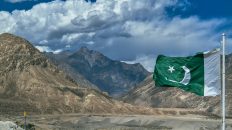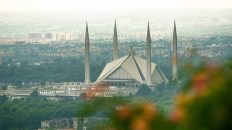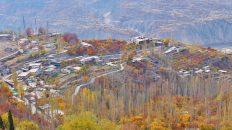Although Machu Picchu is frequently called “mysterious,” its design and function are considered great historical monuments. Pachacuti Inka Yupanqui, the first Inka emperor, had it built as a royal estate on a mountain saddle overlooking the Urubamba River (in modern-day Peru) around the middle of the 15th century. Nearly 3,000 feet lower in elevation and three days’ walk from the Inka city of Cusco, the region has quite a favorable temperature. It was created so that the Inka emperor and his family would have a site to throw feasts, conduct religious rituals, manage the business of the empire, and stake a claim to the land that would be possessed by his lineage after his passing.![]()
Buildings and terraces on the land have an architecture built by carefully aligning individual stones. Terraces were a common feature of highland agriculture long before the Inka. The area that could be used for agriculture was increased, and erosion was reduced, by building brick stairs down the sides of high hillsides. In each step, crops could then be seeded. Terracing utilized the topography, produced maize crops that were essential to rituals, and used to provide nourishment for the emperor and his family when they were traveling. The plentiful crops beneath the mountain crest, which also belonged to Pachacuti and his family, offered additional nourishment.
Water management at the complex was crucial; therefore, a network of stone canals was built to transport rainwater and water from nearby springs. Stone fountains also received some water. There are a total of sixteen foundations, descending in altitude and dispersed over the landscape. The first in the collection is located outside the emperor’s estate. Due to his responsibilities as a sacred king who performed religious ceremonies, it is possible that the emperor used the walls of that fountain’s construction as a ritual bath.
 An observatory, formerly referred to as the Temple of the Sun, was found. The structure’s distinctive design reflects its purpose. It consists of two main parts: an underground cave with masonry extensions containing additional niches and an upper, curved stone enclosure with windows and apertures. The observatory’s windows have been adjusted on their upper walls, showing that they were used to determine the June solstice, as well as the Pleiades’ first-morning rise and other major constellations. The observatory was a structure that both supported and reflected the cosmic philosophy; the cave beneath the enclosure might represent the underworld in the Inka myth.
An observatory, formerly referred to as the Temple of the Sun, was found. The structure’s distinctive design reflects its purpose. It consists of two main parts: an underground cave with masonry extensions containing additional niches and an upper, curved stone enclosure with windows and apertures. The observatory’s windows have been adjusted on their upper walls, showing that they were used to determine the June solstice, as well as the Pleiades’ first-morning rise and other major constellations. The observatory was a structure that both supported and reflected the cosmic philosophy; the cave beneath the enclosure might represent the underworld in the Inka myth.
Machu Picchu has recently been under worldwide attention for both the recovery of artifacts from the site and the preservation of the existing structures against environmental and human impact due to its importance as a significant component for both global and Peruvian history.










